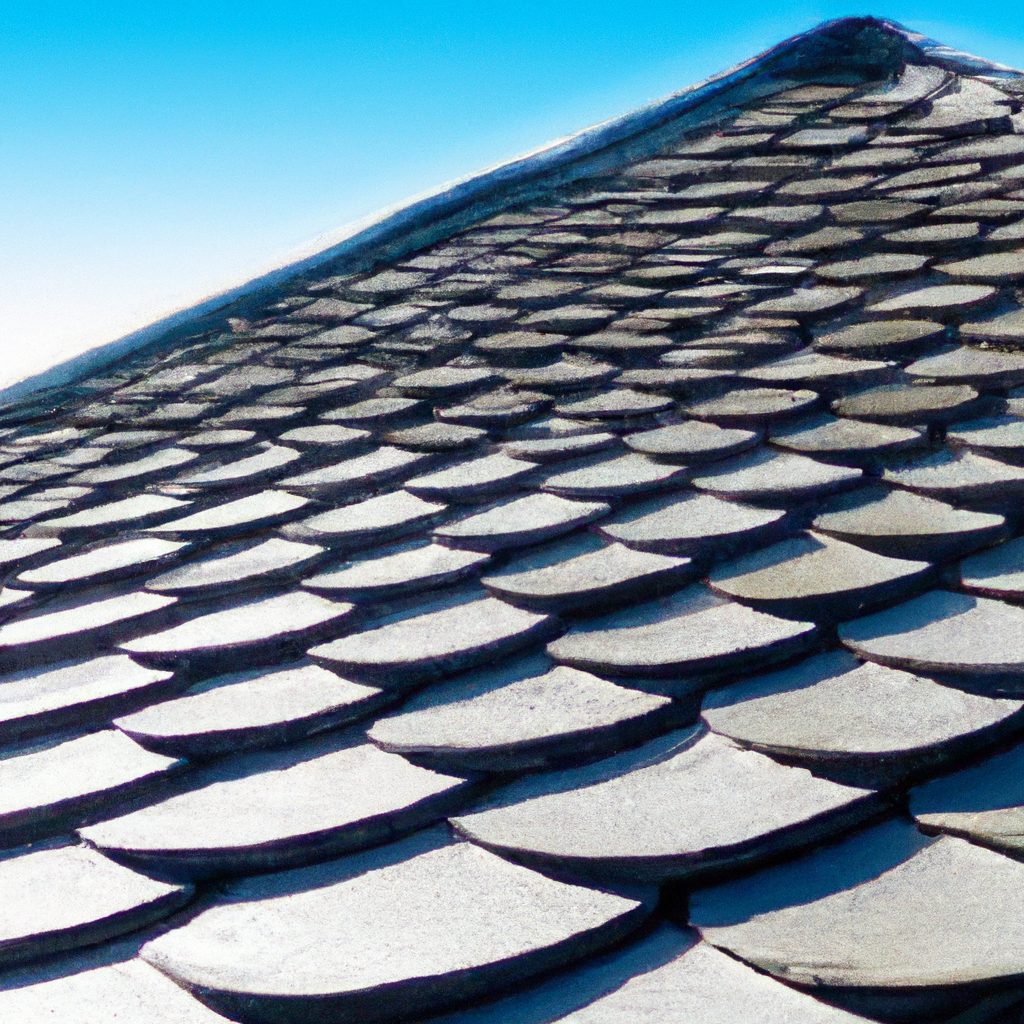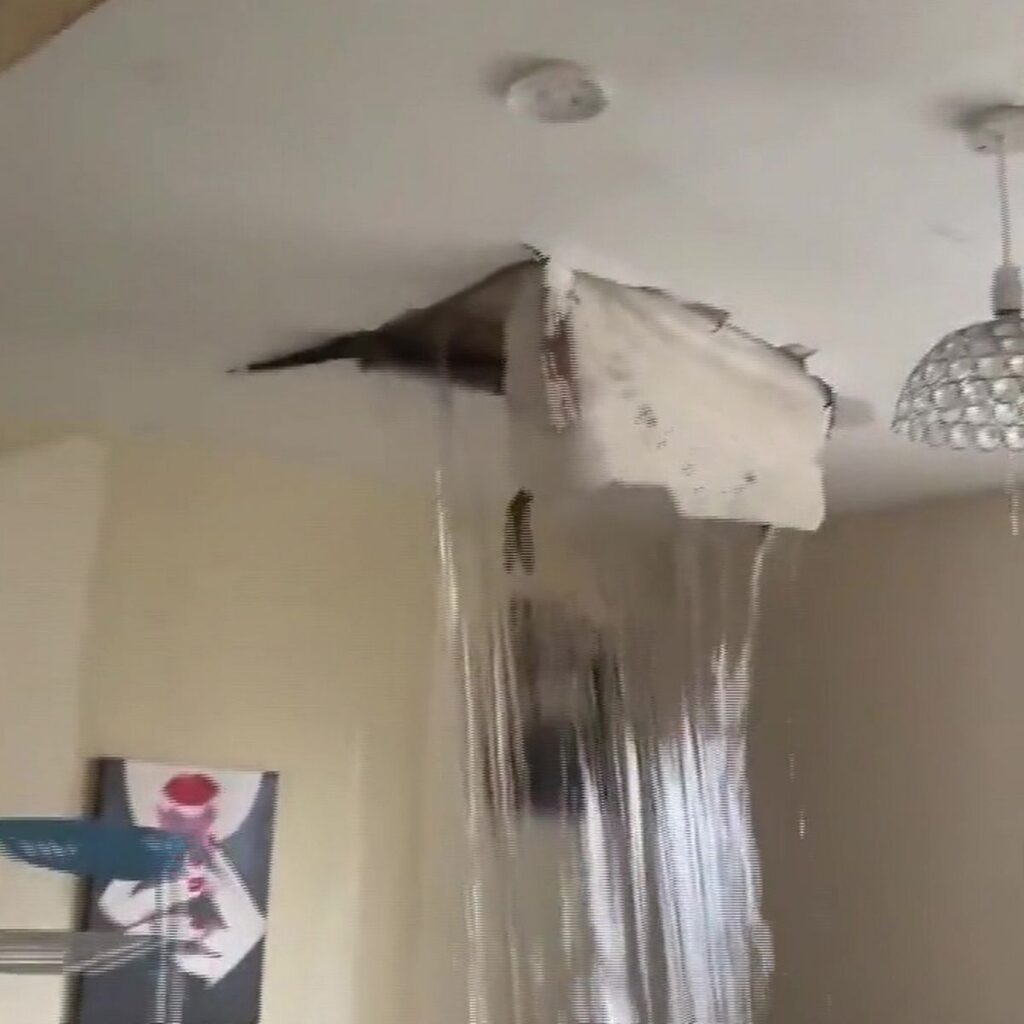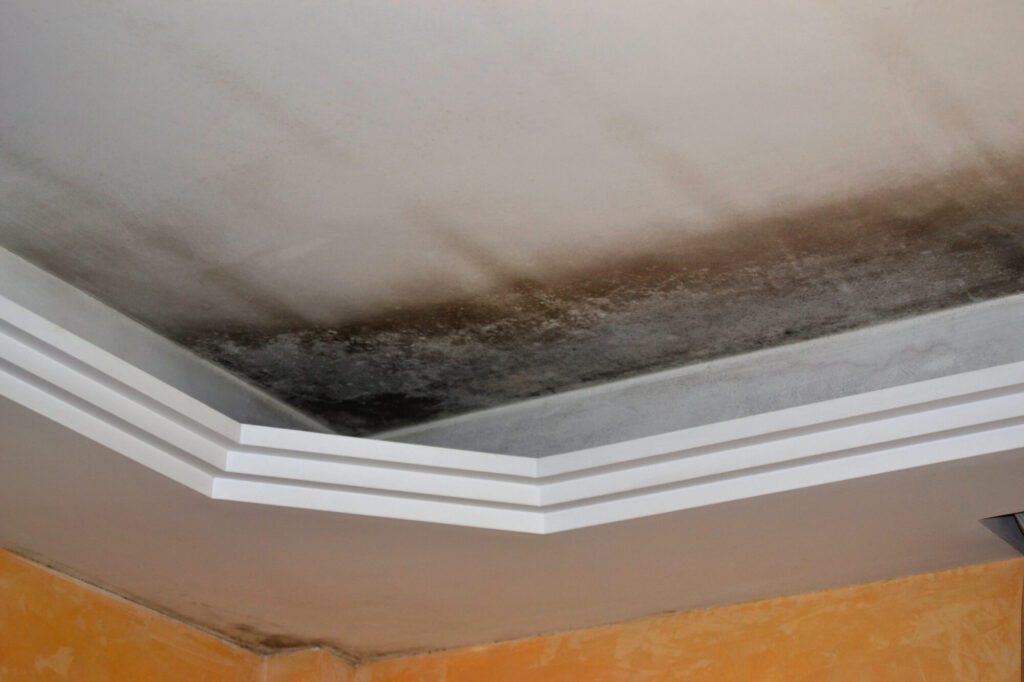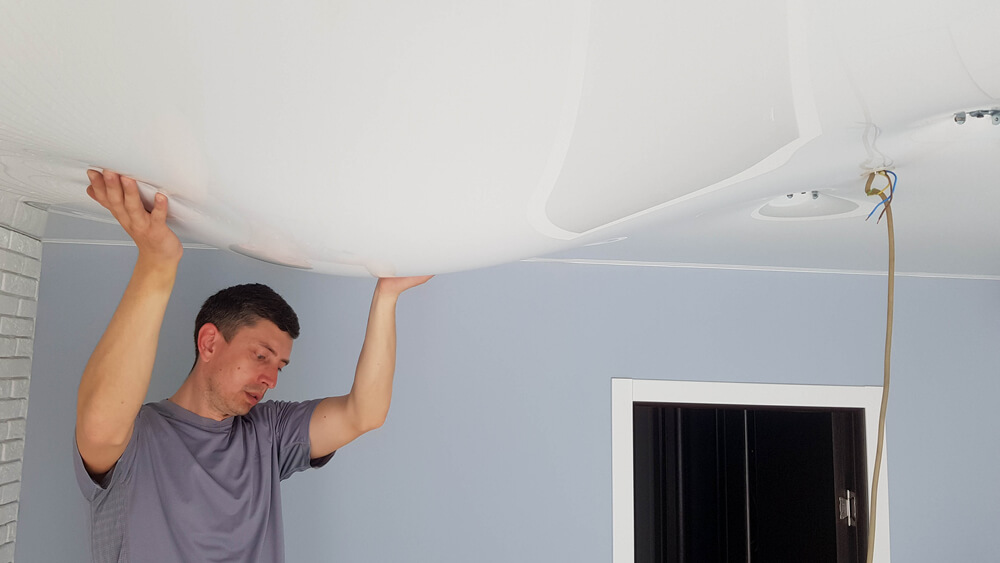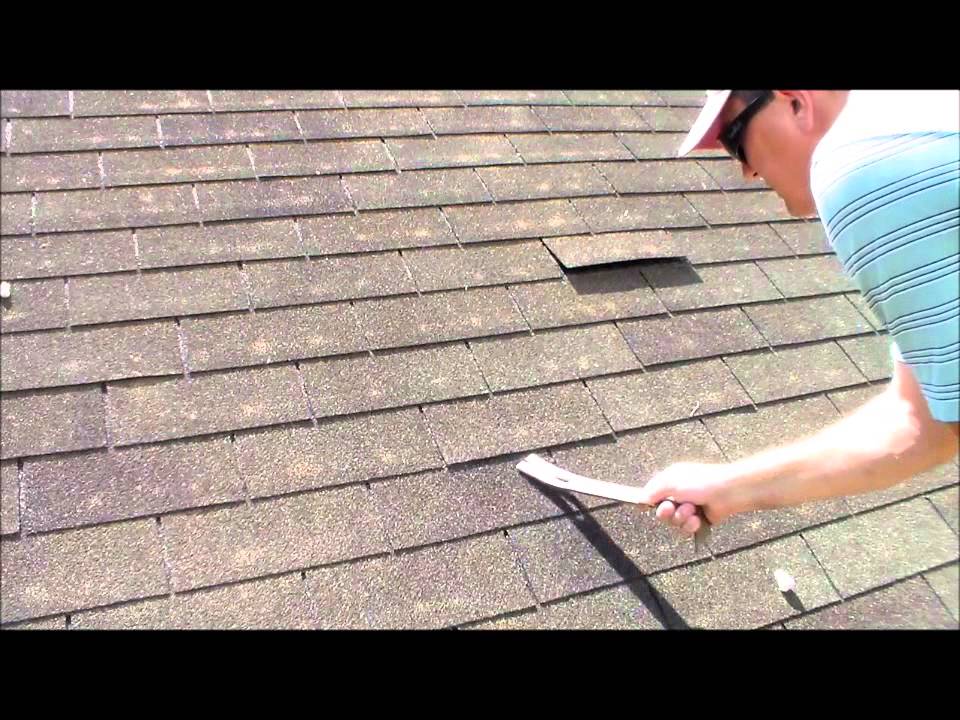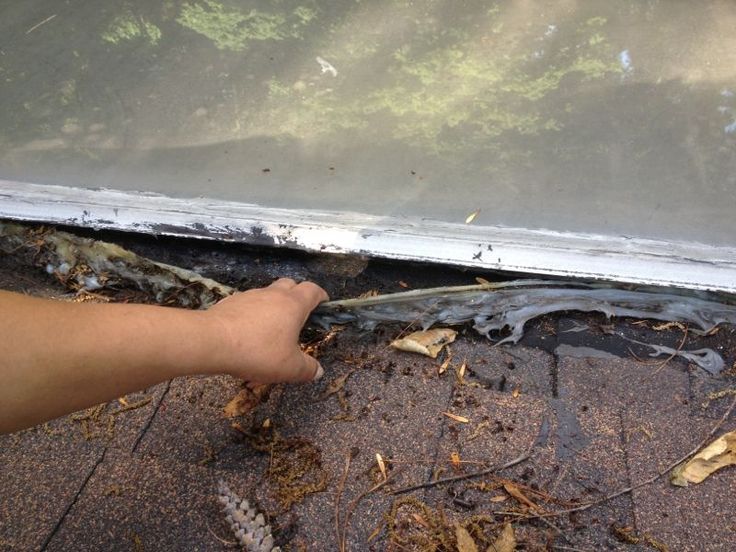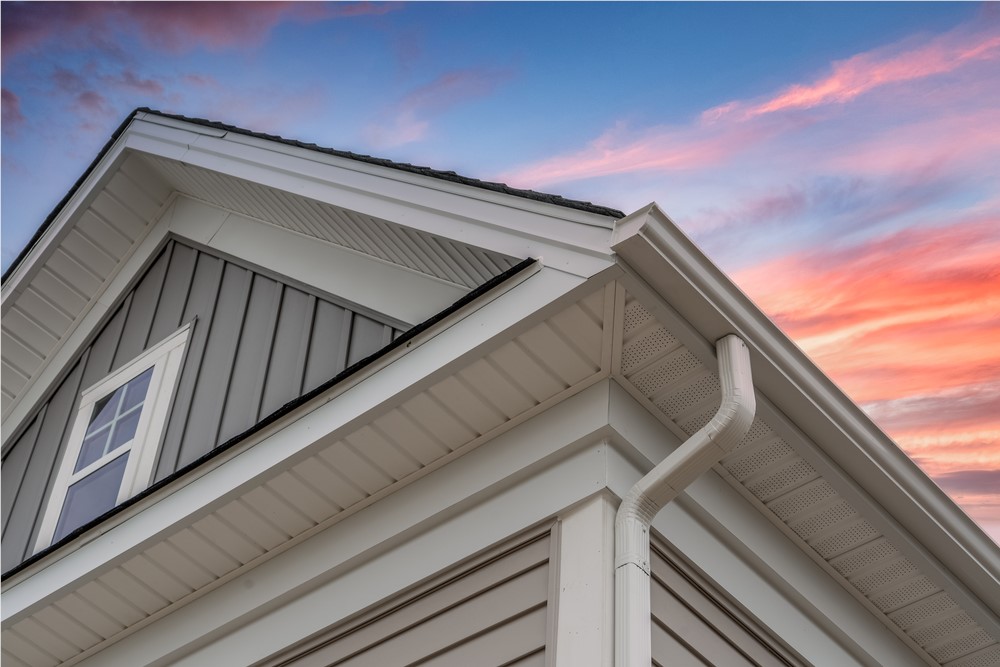If you’ve ever wondered whether or not you should have your insurance company take a look at your roof, you’re not alone. With the unpredictable nature of weather and the potential for damage to occur, it’s natural to want to protect your investment. In this article, we’ll explore the benefits of having your insurance company inspect your roof and how it can provide you with peace of mind. Whether it’s a minor repair or a full replacement, knowing that you have the support of your insurance can make all the difference. So, let’s delve into the world of roof insurance and find out if it’s the right choice for you.


Factors to Consider
When deciding whether or not to involve your insurance company in inspecting your roof, there are several factors that you should take into consideration. These factors can help you determine whether it is necessary to involve your insurance, and whether the potential benefits outweigh the drawbacks.
Age of the roof
The age of your roof is an important factor to consider when deciding whether to involve your insurance. Older roofs are more prone to damage and may require more frequent inspections. If your roof is nearing the end of its lifespan, it may be beneficial to have your insurance inspect it to ensure that there are no hidden damages or potential issues that could lead to costly repairs in the near future.
Roofing material
Different roofing materials have different lifespans and vulnerabilities. Some materials, such as asphalt shingles, may be more susceptible to damage from extreme weather conditions or UV radiation. Other materials, like metal or concrete tiles, may be more durable and require less frequent inspections. It is important to consider the specific characteristics of your roofing material when determining whether to involve your insurance in the inspection process.
Geographical location
The geographical location of your home plays a significant role in the wear and tear that your roof may experience. If you live in an area that is prone to severe weather conditions, such as hailstorms or hurricanes, it may be beneficial to involve your insurance in the inspection process. Insurance companies have expertise in assessing damages caused by extreme weather events and can help identify potential issues that may have been overlooked during a self-inspection.
Weather conditions
Even if you do not live in an area prone to severe weather events, regular exposure to everyday weather conditions can still have an impact on the health of your roof. Sun exposure, rain, snow, and wind can all contribute to the deterioration of roofing materials over time. It is important to consider the local weather conditions and how they may affect the longevity and condition of your roof when determining whether or not to involve your insurance.
Previous damages
If your roof has previously been damaged, either due to a severe weather event or through other means, it may be wise to involve your insurance in the inspection process. Previous damages can weaken the structure of your roof and make it more susceptible to further issues. By involving your insurance, you can ensure that all potential damages are identified and properly assessed.
Frequency of inspections
Regular inspections are crucial for maintaining the health and integrity of your roof. If you have been diligent in conducting inspections yourself or hiring professionals to do so on a regular basis, you may feel confident in your ability to identify any potential issues. However, if you have not been consistent with inspections, involving your insurance can provide an additional layer of assurance that your roof is in good condition and free from hidden damages.
Homeowner’s insurance policy
Reviewing your homeowner’s insurance policy is essential when considering involving your insurance in the inspection process. Some policies may specifically include coverage for roof damages, while others may have stricter limitations or exclusions. Understanding the details of your policy can help you determine whether involving your insurance is a wise decision or if it may result in increased premiums or potential claim denial.
Roof condition
The current condition of your roof is a key factor in determining whether or not to involve your insurance. If you have noticed visible signs of damage, such as missing shingles, leaks, or sagging areas, it is advisable to have your insurance inspect the roof to assess the extent of the damages and determine if they are covered under your policy. Even if there are no visible signs of damage, involving your insurance can provide peace of mind and assurance that your roof is in good condition.
Signs of damage
There are several signs that indicate potential damages or issues with your roof. These signs include water stains on the ceiling, algae or moss growth, excessive granule loss from asphalt shingles, and cracked or curling shingles. If you have noticed any of these signs, it is important to have your roof inspected by a professional, and involving your insurance can be a beneficial step in this process.
Potential Benefits of Having Insurance Inspect Your Roof
There are several potential benefits to involving your insurance company in the inspection of your roof. These benefits can provide peace of mind and financial security, making it a wise decision in certain circumstances.
Identify hidden damages
One of the main benefits of involving your insurance in the inspection process is the ability to identify hidden damages that may not be immediately apparent. Insurance adjusters are trained to look for subtle signs of damage and can use their expertise to identify issues that may have been overlooked during a self-inspection. By identifying and addressing these hidden damages early on, you can prevent further deterioration and potentially costly repairs down the line.
Discover potential leaks
Leaks can be difficult to detect, especially if they are small or located in hard-to-reach areas. Involving your insurance in the inspection process can help identify potential leaks that may not be visible to the naked eye. Early detection of leaks can prevent water damage to your home’s interior, mold growth, and structural issues. By involving your insurance, you can ensure that any potential leaks are identified and addressed before they escalate into major problems.
Maximize insurance coverage
By involving your insurance in the inspection process, you can maximize your insurance coverage for roof damages. Insurance policies typically have specific provisions for roof repairs and replacements, and involving your insurance can help ensure that you receive the maximum coverage that you are entitled to. This can help alleviate some of the financial burden associated with roof repairs and replacements, saving you money in the long run.
Avoid unforeseen expenses
Unexpected roof repairs can be a significant financial burden. By involving your insurance in the inspection process, you can potentially avoid these unforeseen expenses. Insurance companies have a thorough understanding of the costs associated with roof repairs and can provide an accurate estimate of the anticipated expenses. This can help you plan and budget accordingly, avoiding any financial surprises along the way.
Access professional expertise
Insurance adjusters are professionals with expertise in assessing damages and determining the appropriate course of action. By involving your insurance in the inspection process, you have access to this professional expertise. Insurance adjusters can provide valuable insight into the condition of your roof, the necessary repairs or replacements, and the most cost-effective solutions. This expertise can help you make informed decisions and ensure that your roof is restored to its optimal condition.
Peace of mind
One of the greatest benefits of involving your insurance in the inspection process is the peace of mind it can provide. Roof damages can be stressful and worrisome, especially if you are unsure of the extent of the damages and the costs involved in repairs or replacements. By involving your insurance, you can rest assured knowing that professionals are assessing the situation and providing you with guidance and support. This peace of mind can alleviate stress and allow you to focus on other important aspects of your life.
Drawbacks of Involving Insurance
While involving your insurance in the inspection process can have numerous benefits, there are also a few drawbacks to consider. These drawbacks should be carefully weighed against the potential benefits before making a decision.
Higher premiums
Involving your insurance in the inspection process may result in higher premiums. Insurance companies may view the involvement of an insurance claim as an indication of increased risk, which can lead to higher premiums in the future. It is important to consider the potential impact on your insurance premiums before involving your insurance in the inspection process.
Policy deductible
Most insurance policies have a deductible, which is the amount you must pay out of pocket before your insurance coverage kicks in. Involving your insurance in the inspection process may result in having to pay this deductible. If the cost of the repairs or replacements is less than your deductible, involving your insurance may not be financially beneficial for you. It is important to carefully consider your deductible when deciding whether or not to involve your insurance.
Potential claim denial
There is always a risk of potential claim denial when involving your insurance in the inspection process. Insurance companies have specific criteria and requirements for approving claims, and if your damages do not meet these criteria, your claim may be denied. This can be frustrating and may result in having to bear the full cost of repairs or replacements. It is essential to review your insurance policy and fully understand the coverage and exclusions before involving your insurance.
Increased scrutiny
Involving your insurance in the inspection process may subject your roof to increased scrutiny. Insurance adjusters may closely examine the condition of your roof, including any pre-existing damages or maintenance issues. If your roof is found to have pre-existing damage or inadequate maintenance, it may impact your insurance coverage or lead to increased scrutiny in the future. It is important to be aware of this increased scrutiny and take necessary steps to ensure that your roof is in optimal condition before involving your insurance.
Time-consuming process
Navigating the insurance claim process can be time-consuming. Involving your insurance in the inspection process requires filing a claim, coordinating inspections, providing necessary documentation, evaluating insurance estimates, and potentially negotiating with adjusters. This process can be lengthy and may require a significant amount of time and effort on your part. It is important to consider your availability and willingness to commit to the insurance claim process before involving your insurance.
Determining the Necessity
Determining whether or not it is necessary to involve your insurance in the inspection of your roof requires careful evaluation of several factors. These factors can help guide your decision-making process and ensure that you make an informed choice.
Evaluate the roof’s age
The age of your roof is a critical factor in determining the necessity of involving your insurance in the inspection process. If your roof is relatively new and does not exhibit any visible signs of damage or deterioration, it may not be necessary to involve your insurance at this time. However, if your roof is approaching the end of its expected lifespan or if it has reached an age where issues are more likely to arise, involving your insurance can provide valuable peace of mind and protect against unforeseen expenses.
Assess current condition
Assessing the current condition of your roof is essential in determining whether or not to involve your insurance. Conduct a thorough inspection of your roof, looking for visible signs of damage such as missing or damaged shingles, sagging areas, or leaks. If you notice any significant issues or if you are unsure of the extent of the damages, involving your insurance can help ensure that all potential issues are properly addressed.
Inspect for visible damages
Visible damages are an important consideration when determining whether or not to involve your insurance. Assess any visible damages on your roof, such as loose or damaged shingles, cracked tiles, or signs of leaks. If the damages are minor and easily repairable, involving your insurance may not be necessary. However, if the damages are extensive or require significant repairs or replacements, involving your insurance can provide the financial coverage needed to address these issues.
Consider previous repairs
If your roof has previously been repaired or replaced, it is important to consider this when determining the necessity of involving your insurance. Assess the quality of the previous repairs and evaluate whether any potential issues may have been overlooked or inadequately addressed. If you have concerns about the previous repairs or if there is a history of recurring damages, involving your insurance can provide the reassurance that all potential issues are properly addressed.
Review homeowner’s insurance policy
Reviewing your homeowner’s insurance policy is crucial in determining the necessity of involving your insurance in the inspection process. Familiarize yourself with the coverage and exclusions related to roof damages. Consider the deductible amount and any potential impact on your insurance premiums. If your policy offers comprehensive coverage for roof damages and the potential benefits outweigh the drawbacks, involving your insurance may be a wise decision.
Consult with a roofing professional
Consulting with a roofing professional can provide valuable insight and guidance when determining the necessity of involving your insurance. A professional roof inspector can assess the condition of your roof, identify any potential issues, and provide recommendations for repairs or replacements. Their expertise can help you make an informed decision about whether or not to involve your insurance in the inspection process.
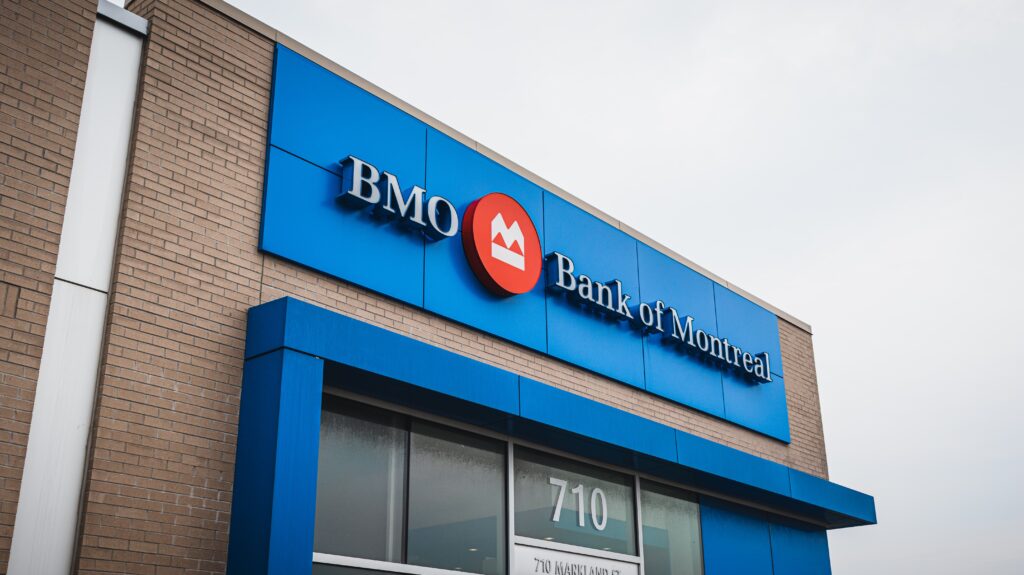

Steps to Take Before Contacting Insurance
Before contacting your insurance company and involving them in the inspection process, there are several steps you can take to better understand the extent of the damages and assess the financial impact.
Perform a self-inspection
Begin by performing a thorough self-inspection of your roof. Carefully inspect the entire surface, looking for any visible signs of damage such as missing or damaged shingles, cracked tiles, or areas of sagging. Take note of any potential issues and document them with photographs for future reference.
Document damages with photographs
Photographs are a crucial form of documentation when it comes to involving your insurance in the inspection process. Take clear and detailed photographs of any visible damages or issues that you have identified during your self-inspection. These photographs can serve as evidence during the claims process and help support your case.
Obtain multiple quotes for repairs
Obtaining multiple quotes for repairs or replacements is essential in determining the financial impact of involving your insurance. Contact reputable roofing contractors and request detailed written estimates for the necessary repairs or replacements. Compare these quotes to get a better understanding of the potential costs involved.
Assess the financial impact
Consider the financial impact of involving your insurance in the inspection process. Take into account the potential costs of repairs or replacements, your insurance deductible, and the potential impact on your insurance premiums. Evaluate your budget and financial capabilities to determine whether involving your insurance is a financially viable option.
Consider the timing
Timing is an important factor to consider when determining whether or not to involve your insurance. Assess the urgency of the repairs or replacements and consider any potential risks associated with delaying the process. If the damages pose an immediate threat to the structural integrity of your home or if there is a high risk of further damages, involving your insurance may be a necessary step.
Review your insurance policy
Reviewing your homeowner’s insurance policy is crucial before involving your insurance. Familiarize yourself with the coverage and exclusions related to roof damages, deductibles, and potential claim denial criteria. Ensure that you fully understand your policy and how it may impact your decision-making process.
Navigating the Insurance Claim Process
If you have determined that involving your insurance is necessary, navigating the insurance claim process requires a structured approach. These steps can help you successfully navigate the process and maximize your insurance coverage.
Contacting your insurance company
Begin by contacting your insurance company to initiate the claim process. Provide them with all relevant details regarding the damages to your roof, including photographs and a detailed description. Be prepared to answer any additional questions or provide further documentation as requested.
Filing the claim
Once you have contacted your insurance company, they will guide you through the process of filing the claim. This typically involves completing a claim form, providing information about the damages, and explaining the circumstances surrounding the incident. Be thorough and accurate in your responses to ensure a smooth claims process.
Providing necessary documentation
Throughout the claims process, your insurance company may require additional documentation to support your claim. This may include photographs, estimates from roofing contractors, or invoices for previous repairs. Be proactive in providing any requested documentation to avoid delays in the processing of your claim.
Coordinating inspections
Your insurance company will likely coordinate inspections of your roof to assess the damages and determine the appropriate course of action. Be prepared to accommodate these inspections and provide access to your property for the adjusters. Cooperating with the inspection process will help expedite your claim.
Evaluating insurance estimates
After the inspections have been conducted, your insurance company will provide you with estimates for the necessary repairs or replacements. Carefully review these estimates to ensure they accurately reflect the damages identified during the inspections. If you have concerns or believe that the estimates are inadequate, consult with a roofing professional for an independent assessment.
Negotiating with adjusters
If you have concerns about the insurance estimates or if you believe that they are insufficient to cover the necessary repairs or replacements, you can negotiate with your insurance adjuster. Present any additional evidence or independent assessments that support your case and advocate for a fair settlement. Be professional yet firm in your negotiations to achieve the desired outcome.
Understanding claim settlement options
Once an agreement has been reached regarding the scope of repairs or replacements, your insurance company will present you with claim settlement options. This may include a cash payment, a reimbursement for the repairs, or direct coordination with a roofing contractor. Take the time to understand these settlement options and choose the one that best suits your circumstances.


Alternatives to Insurance Involvement
In certain situations, involving your insurance in the inspection process may not be the most suitable option. There are alternative approaches to consider that can help you address roof damages and protect your investment.
Self-financed repairs
If the damages to your roof are minor and within your budget, you may choose to self-finance the repairs or replacements. This can be a viable option if the damages do not pose an immediate threat to the structural integrity of your home and if involving your insurance would result in increased premiums or potential claim denial.
Utilizing warranties
If your roof is still within the warranty period provided by the roofing material manufacturer or the roofing contractor, you can explore utilizing these warranties. Contact the respective parties and inquire about the coverage and the process for filing a warranty claim. This can provide a cost-effective solution for addressing the damages to your roof without involving your insurance.
Hiring a private roof inspector
If you have concerns about the objectivity of the insurance inspection process or if you want an independent assessment of the damages to your roof, you can hire a private roof inspector. These professionals can provide an unbiased evaluation of your roof’s condition, identify potential issues, and recommend the necessary repairs or replacements. While this approach may involve an additional cost, it can provide peace of mind and ensure a thorough inspection.
Seeking assistance from local housing programs
In some cases, local housing programs or government agencies may offer assistance for home repairs or rehabilitation. Research the available programs in your area and determine if you qualify for any support. These programs can provide financial assistance or low-cost loans to help cover the costs of roof repairs or replacements.
Exploring financing options
If the financial impact of involving your insurance or self-financing the repairs is burdensome, you can explore financing options. Contact financial institutions or lenders to inquire about loans or lines of credit specifically designed for home improvements or repairs. By spreading the cost of the repairs over time, you can alleviate the immediate financial burden and address the damages to your roof.
How to Choose a Reliable Roofing Contractor
When faced with roof damages and repairs or replacements, choosing a reliable roofing contractor is crucial. Follow these steps to ensure you hire a reputable professional who can provide quality workmanship and value for your investment.
Research local contractors
Begin by researching local contractors in your area. Look for contractors who specialize in roof repairs or replacements and have a strong presence and reputation within your community. Online directories, review websites, and recommendations from friends, family, or neighbors can be valuable resources in your research.
Check credentials and certifications
Once you have identified potential contractors, check their credentials and certifications. Verify that they are licensed, insured, and in good standing with local and state regulatory agencies. Additionally, look for certifications from reputable organizations, such as the National Roofing Contractors Association (NRCA), that indicate a commitment to professionalism and quality standards.
Read customer reviews and testimonials
Customer reviews and testimonials can provide valuable insight into the quality of work and customer satisfaction of a roofing contractor. Read reviews on reputable websites or ask the contractor for references from previous clients. Contact these references to inquire about their experience with the contractor and whether they would recommend their services.
Obtain referrals from trusted sources
Ask for referrals from trusted sources, such as friends, family, or neighbors who have recently had their roofs repaired or replaced. These individuals can provide honest feedback and recommendations based on their personal experiences. Consider their referrals alongside other information gathered during your research.
Request detailed written estimates
Contact multiple contractors and request detailed written estimates for the necessary repairs or replacements. These estimates should include a breakdown of the costs, materials to be used, and the timeline for completion. Compare these estimates to ensure consistency and accuracy and consider any variations or discrepancies in your decision-making process.
Verify insurance coverage and licenses
Before hiring a roofing contractor, verify their insurance coverage and licenses. Request proof of insurance, including general liability, workers’ compensation, and any other applicable coverage. Additionally, verify their licenses with the appropriate local and state regulatory agencies to ensure that they are in good standing and compliant with applicable laws and regulations.
Sign a comprehensive written contract
Once you have chosen a roofing contractor, be sure to sign a comprehensive written contract that clearly outlines the scope of work, materials to be used, payment terms, warranties, and any other pertinent details. Review the contract carefully and ensure that all necessary provisions are included before signing. A written contract provides protection for both parties and ensures that expectations are clearly communicated.
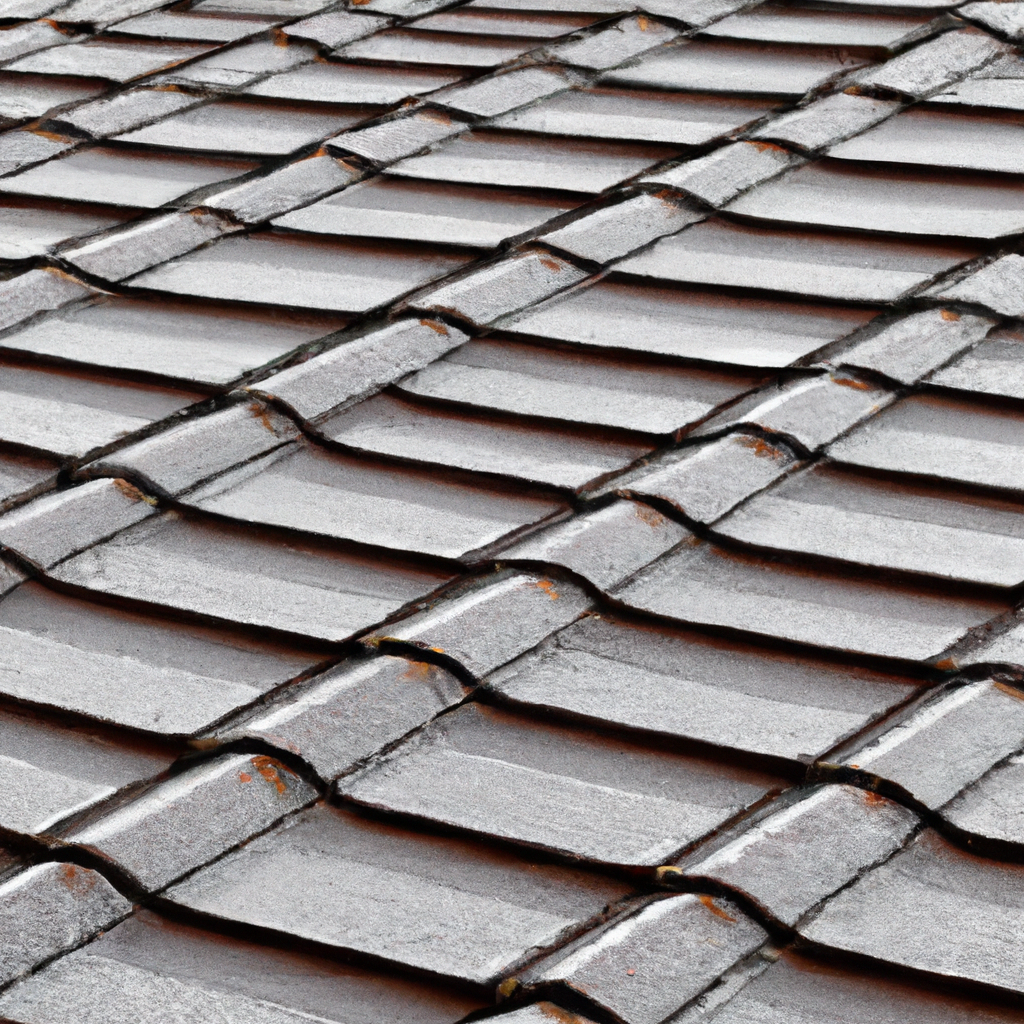

Tips for Preventing Roof Damages
Preventing roof damages is essential for maintaining the longevity and integrity of your roof. Follow these tips to minimize the risk of damages and prolong the lifespan of your roof.
Regular inspections and maintenance
Perform regular inspections of your roof to identify any potential issues early on. Look for visible signs of damage, such as missing shingles or cracked tiles, and address them promptly. Additionally, schedule regular maintenance, such as cleaning gutters and downspouts, to prevent water buildup and potential damages.
Cleaning gutters and downspouts
Regularly clean gutters and downspouts to ensure that water can flow freely off your roof. Clogged gutters can lead to water overflow and cause damage to your roof, so it is essential to keep them clear of debris. Consider installing gutter guards or screens to minimize debris buildup and reduce the frequency of cleanings.
Trimming overhanging tree branches
Overhanging tree branches can pose a risk to your roof, especially during storms or high winds. Trim back tree branches that come into contact with your roof to prevent them from causing damage. Additionally, keep trees surrounding your home properly maintained to minimize the risk of falling branches or debris.
Addressing small repairs promptly
Small repairs, such as replacing a missing shingle or sealing a minor leak, should be addressed promptly to prevent further damage. Ignoring small issues can lead to larger problems and potentially more costly repairs in the future. Regularly inspect your roof and address any small repairs as soon as they are identified.
Ensuring proper attic ventilation
Proper attic ventilation is essential for maintaining the health of your roof. It helps regulate temperature and moisture levels, preventing the buildup of excess heat and humidity that can lead to damages. Ensure that your attic is well-ventilated and consider installing additional vents or fans if necessary.
Protecting against ice dams
In colder climates, ice dams can form on the edges of roofs, leading to water damage and leaks. Protect your roof against ice dams by ensuring proper insulation and ventilation, as well as by using heat cables or ice dam prevention systems. Remove snow accumulation from your roof promptly to minimize the risk of ice dams forming.
Monitoring for signs of water damage
Regularly monitor your home’s interior for signs of water damage, such as water stains, mold growth, or musty odors. These signs can indicate a roof leak or other water-related issues. If you notice any signs of water damage, address them promptly to prevent further deterioration and potential structural issues.
Conclusion
When deciding whether to involve your insurance in the inspection of your roof, it is important to carefully evaluate the factors outlined in this article. Consider the age and condition of your roof, the potential benefits and drawbacks of involving your insurance, and the alternatives available to you. Take the necessary steps to determine the necessity of involving your insurance and navigate the claims process effectively. Finally, prioritize regular roof inspections and maintenance to prevent damages and ensure the longevity of your roof. By weighing the pros and cons, obtaining professional advice, and making an informed decision, you can ensure that your roof is properly inspected, repaired, or replaced, providing you with peace of mind and protecting the value of your home.
